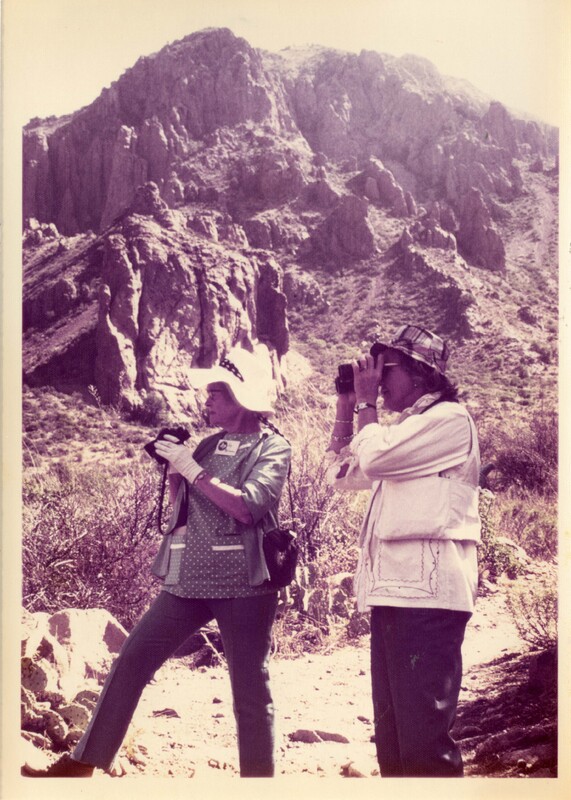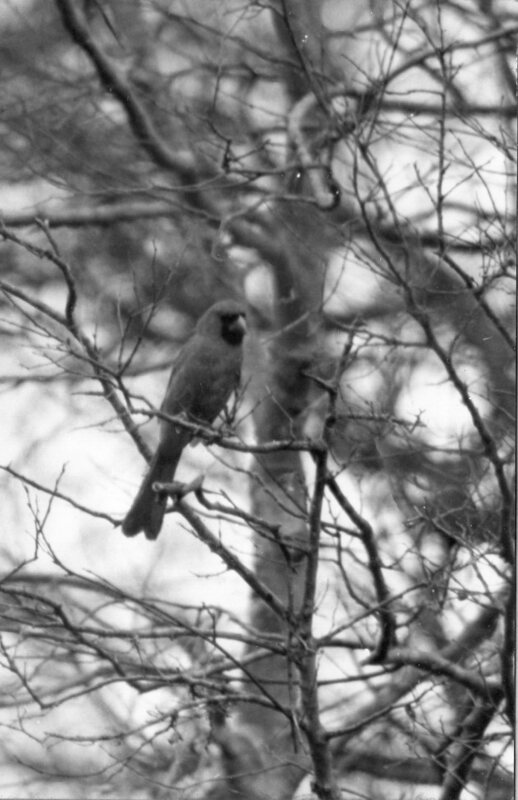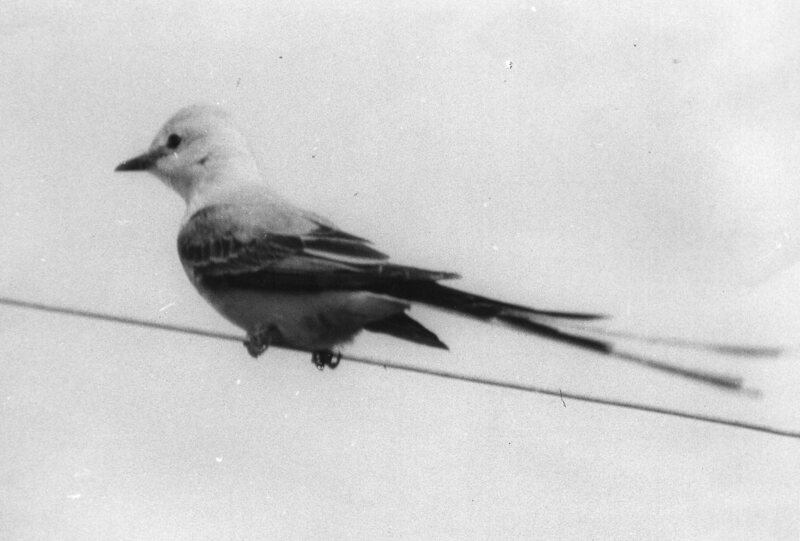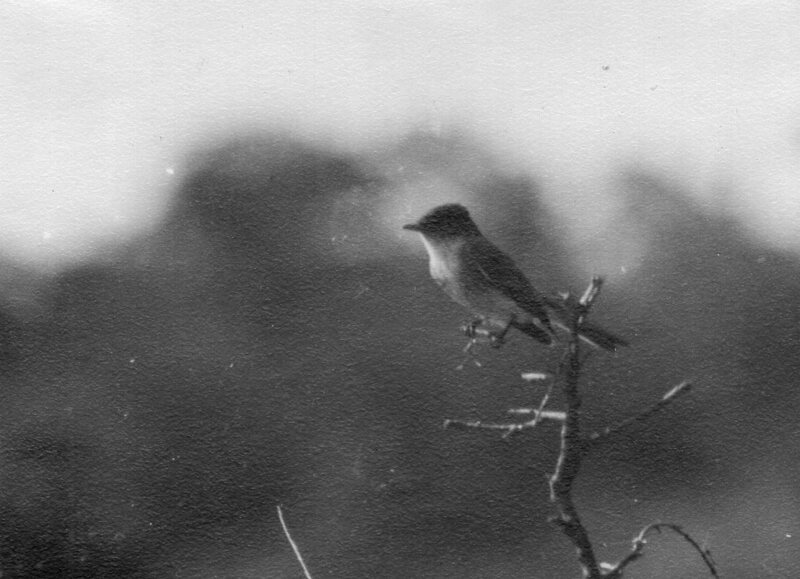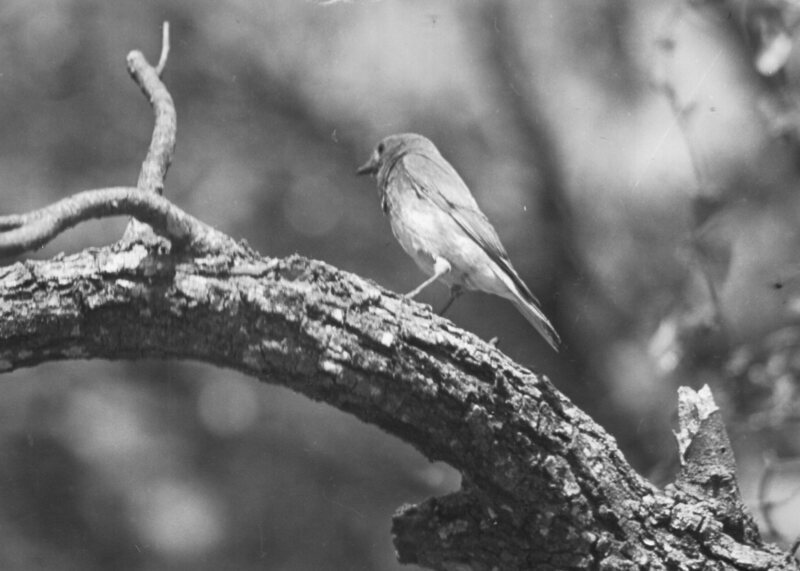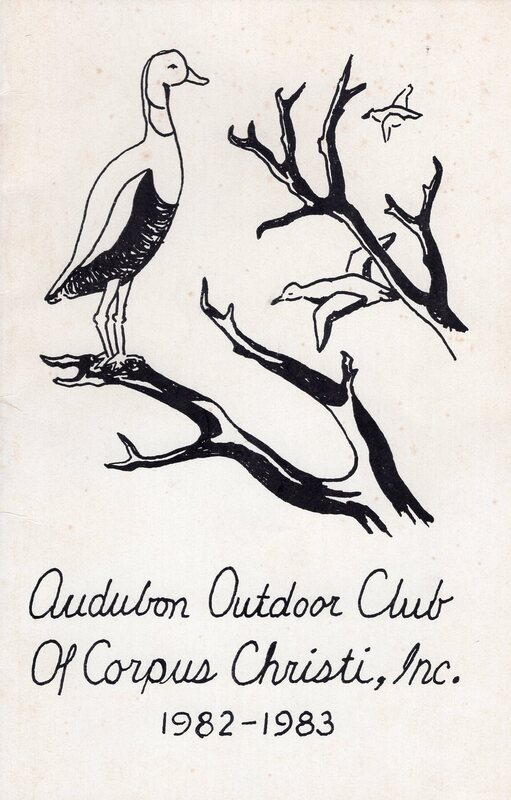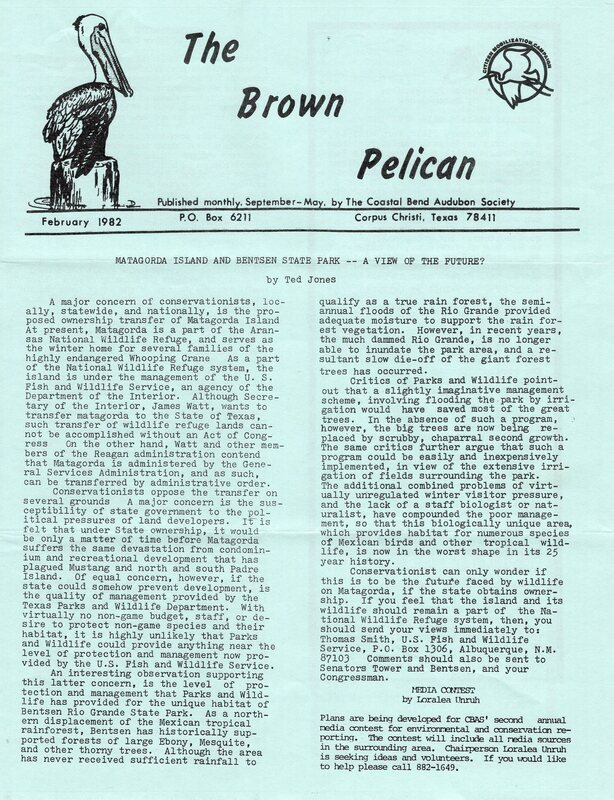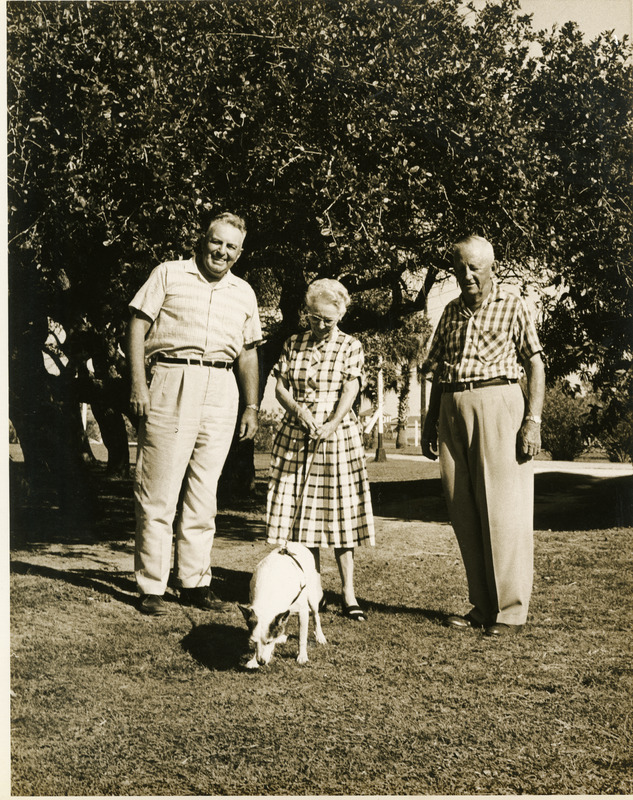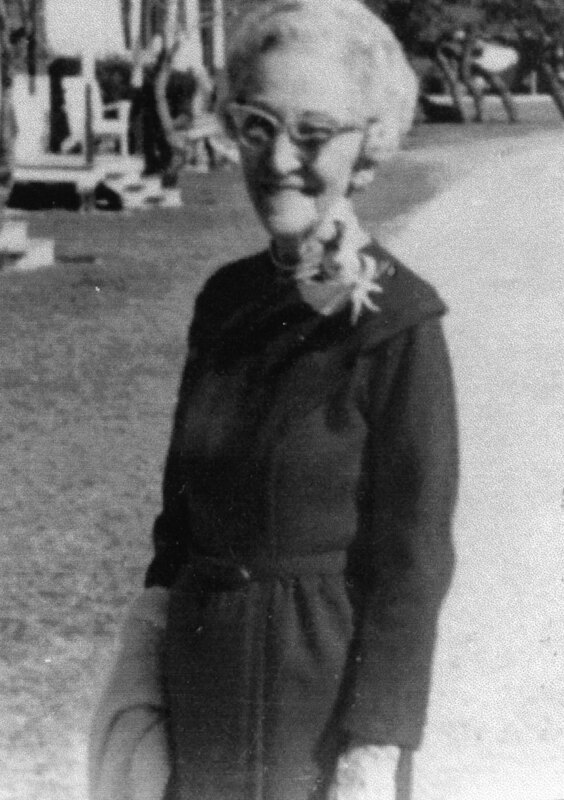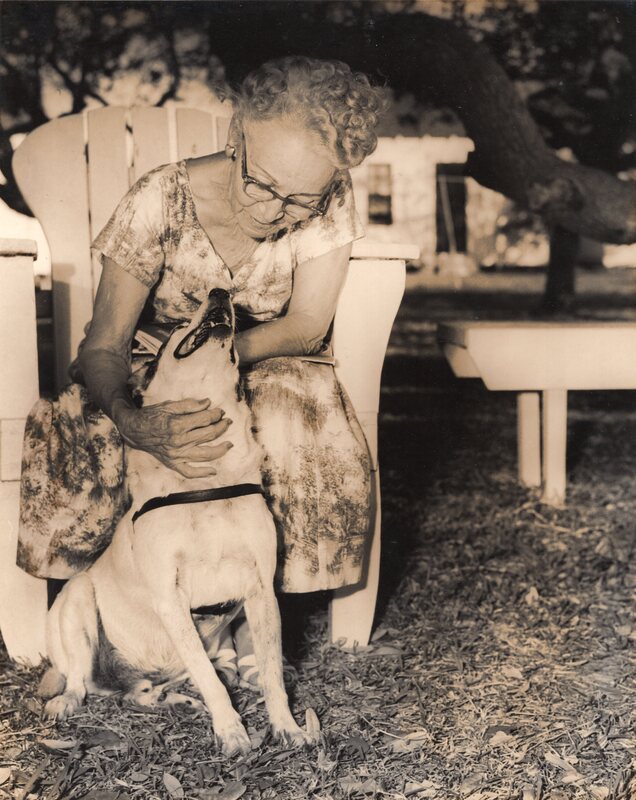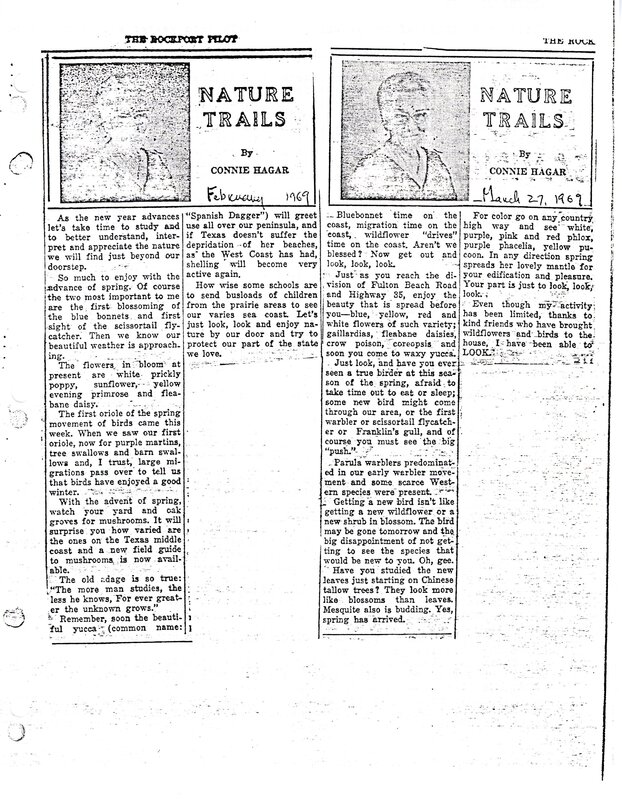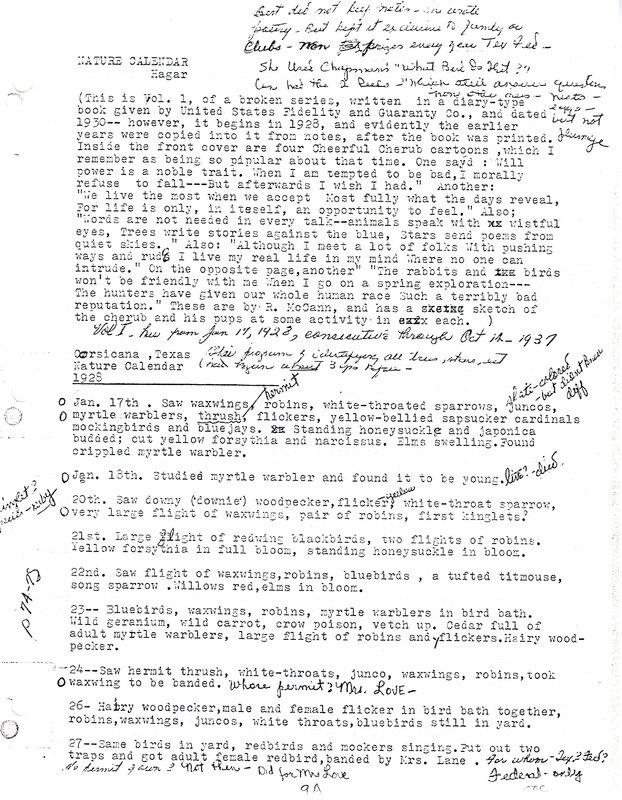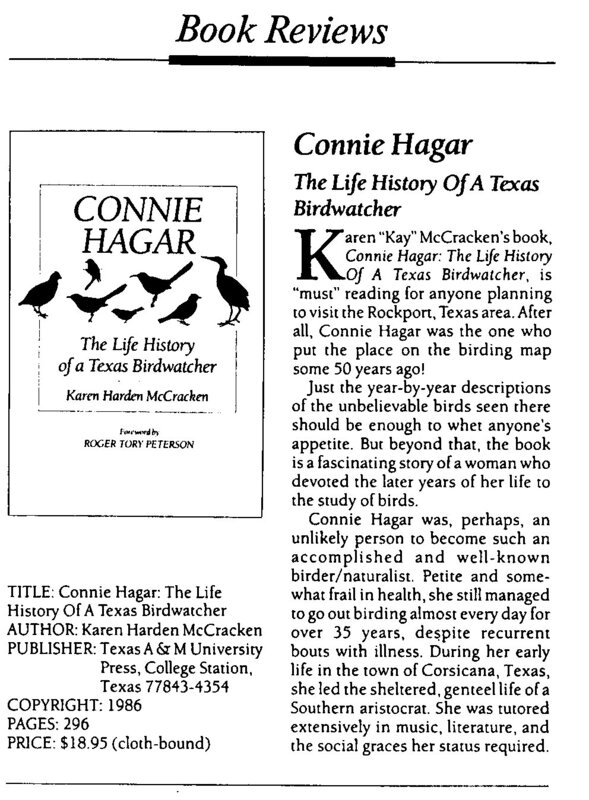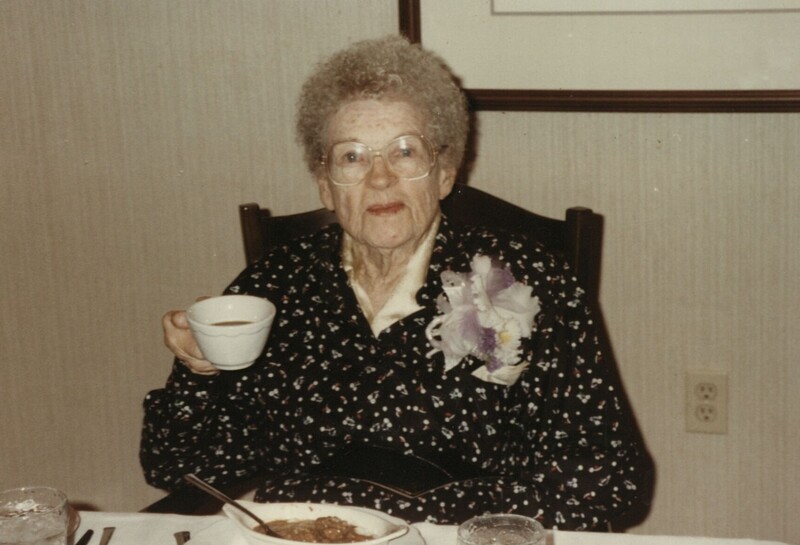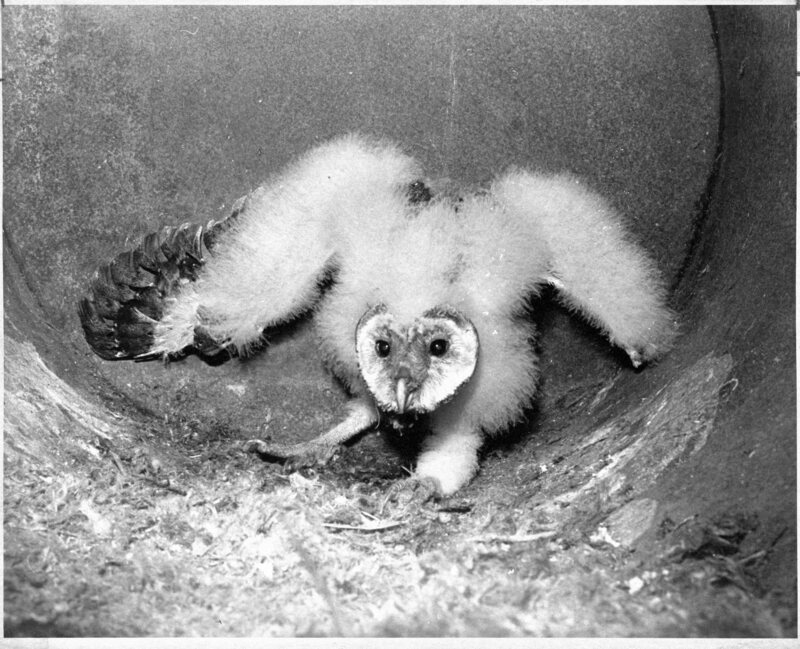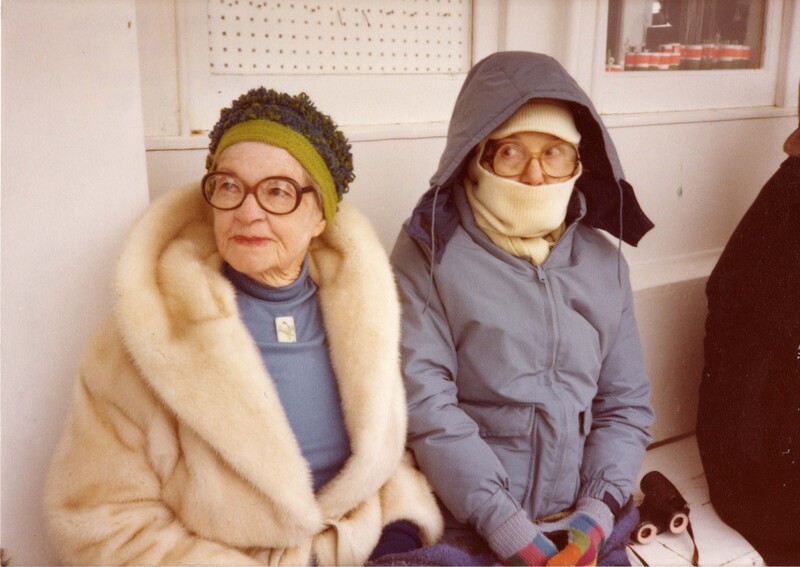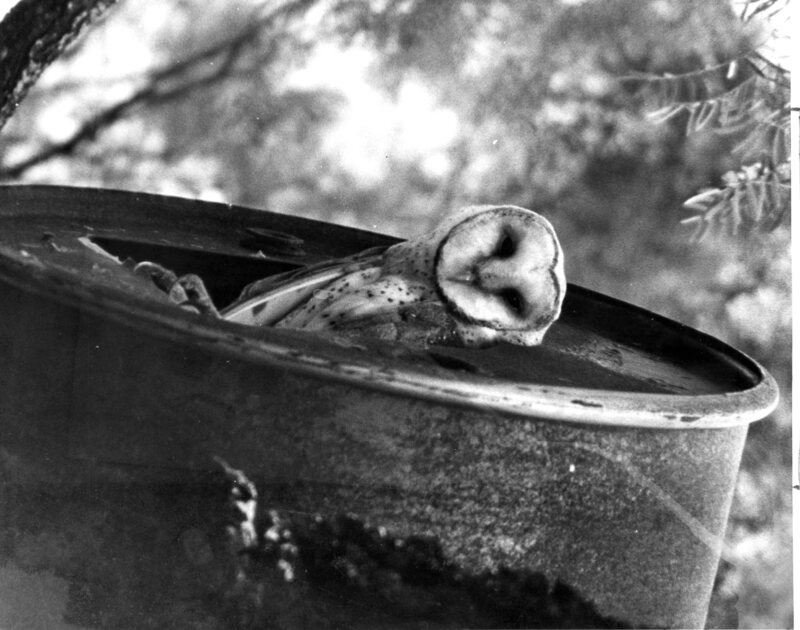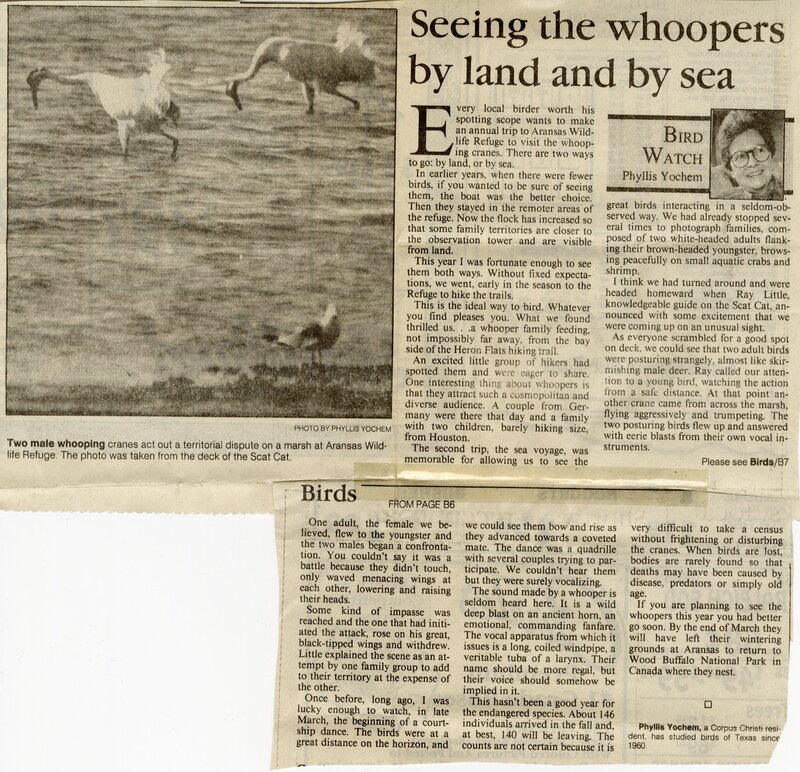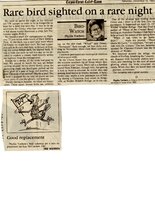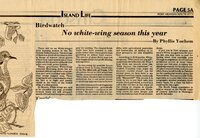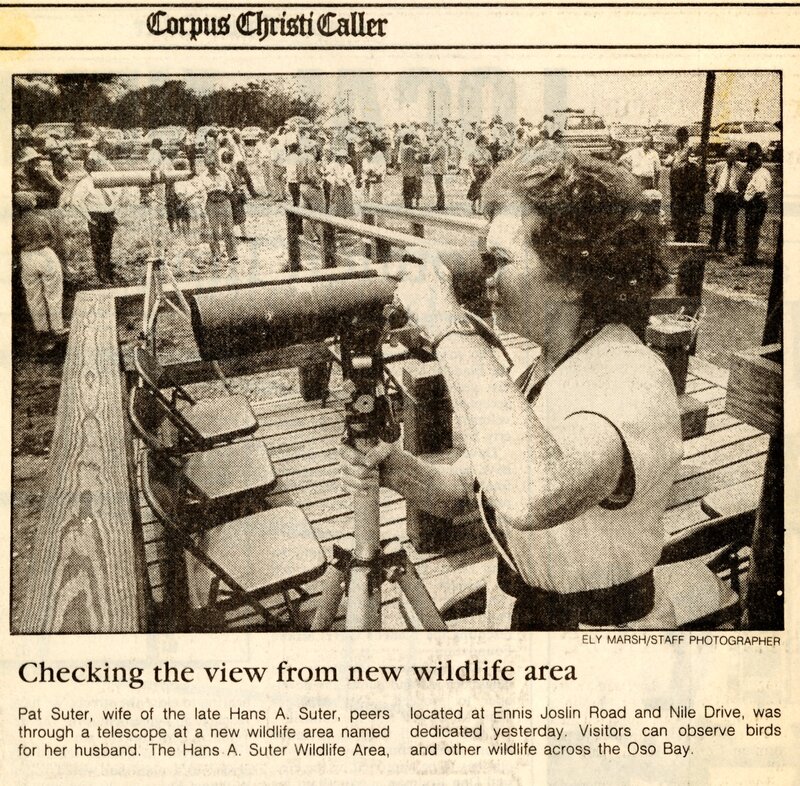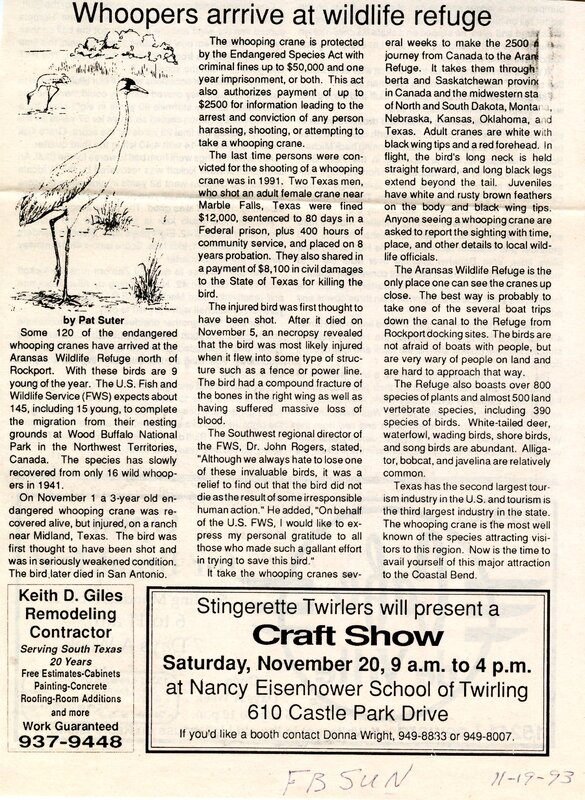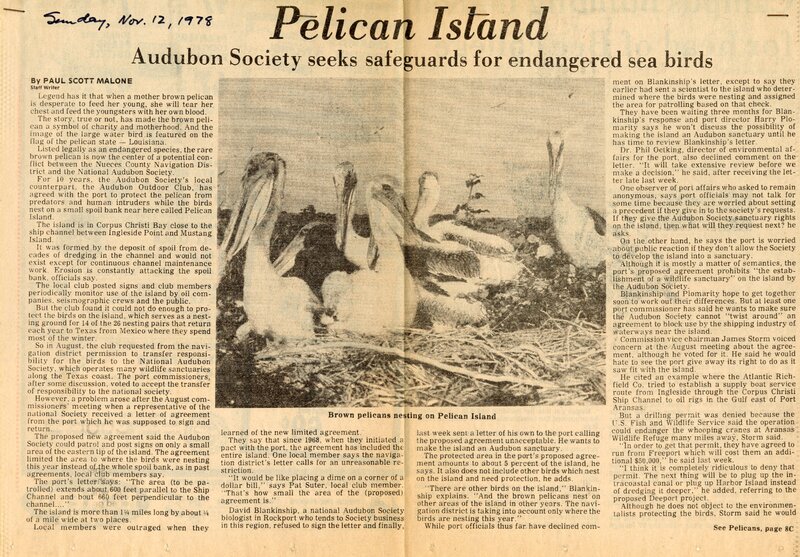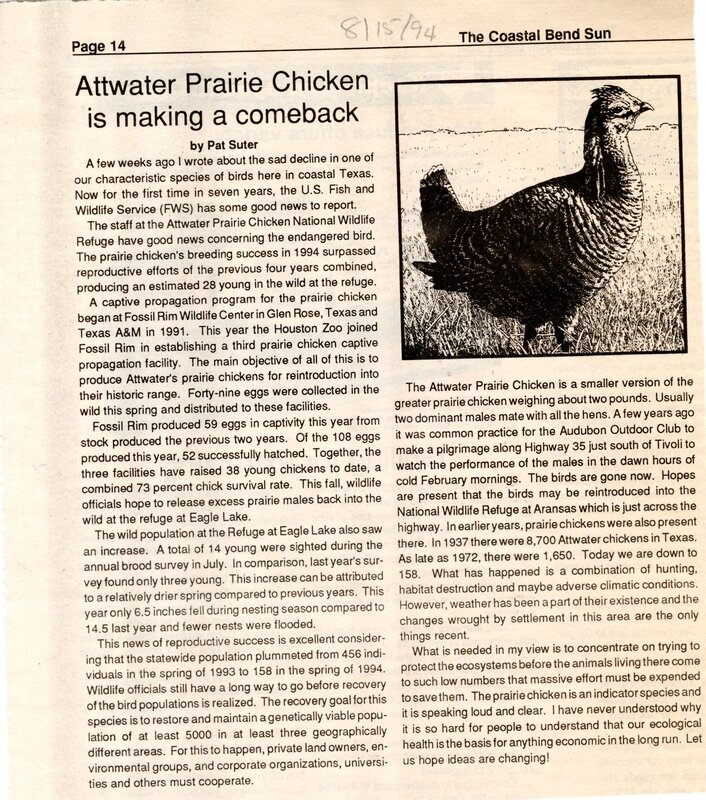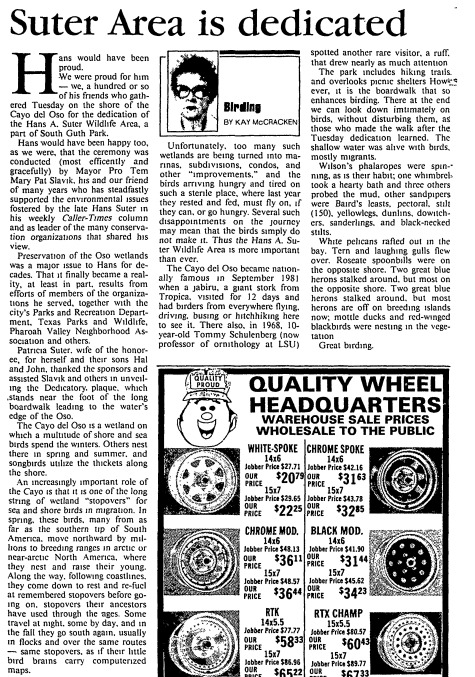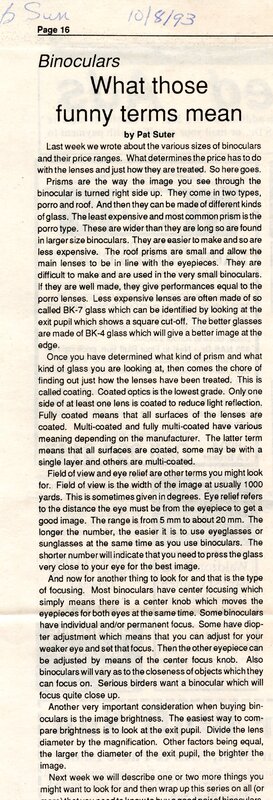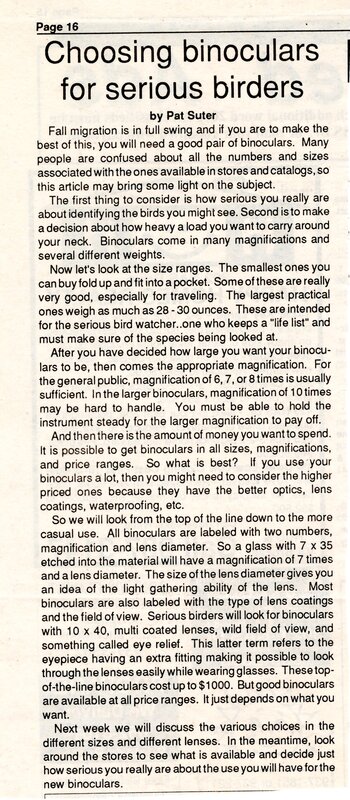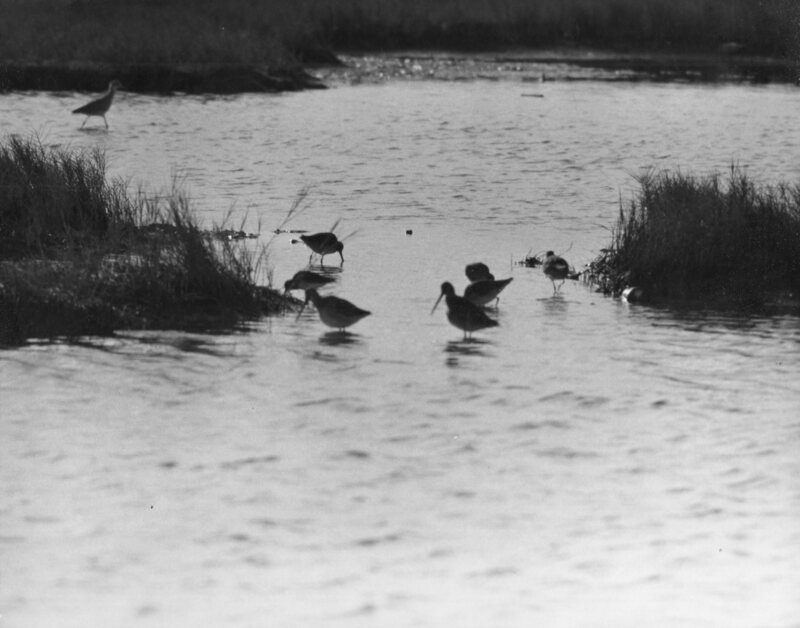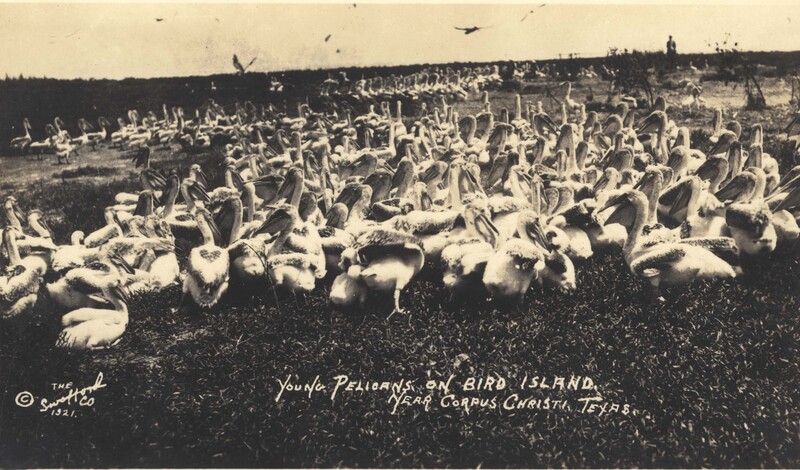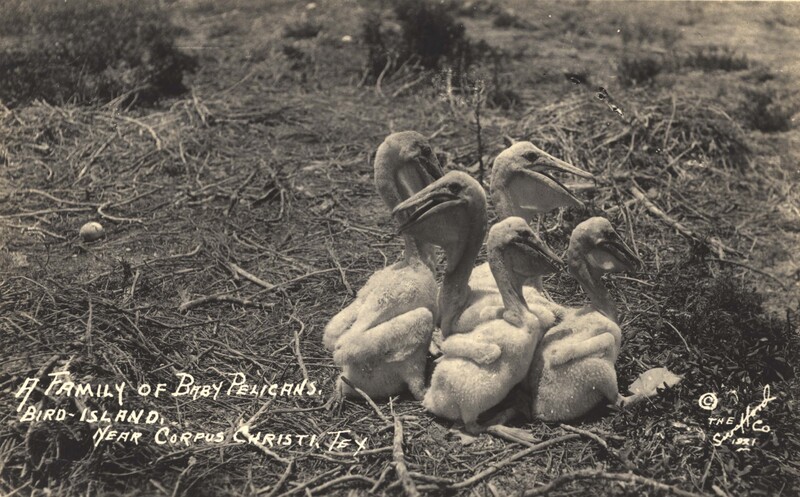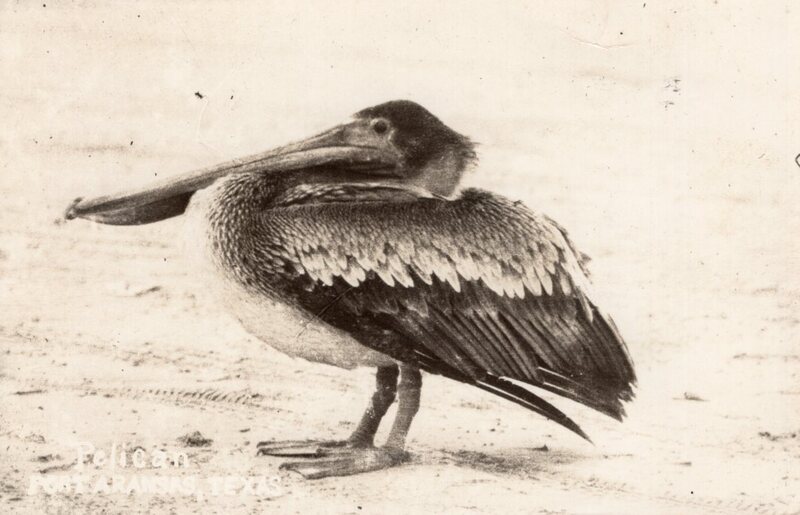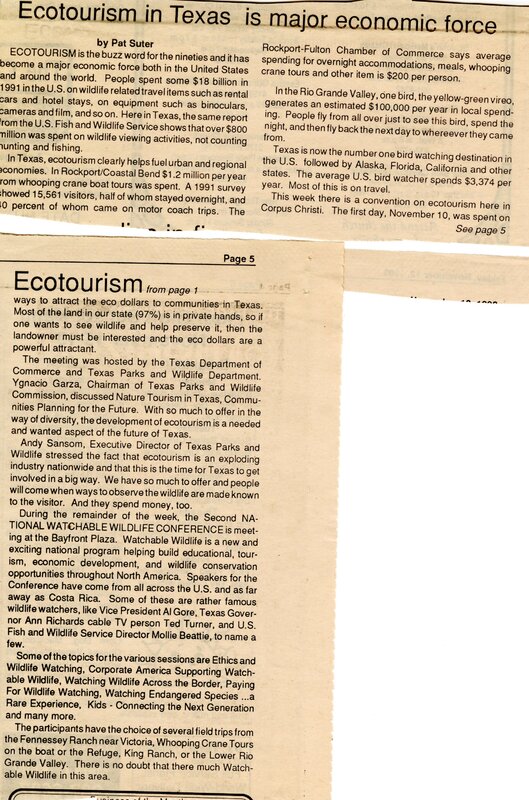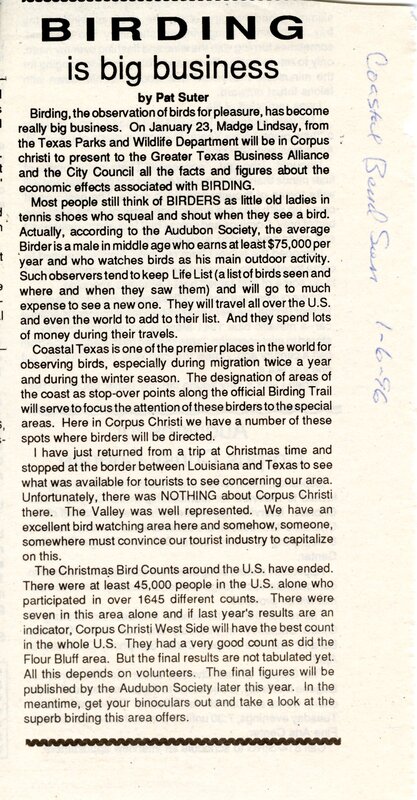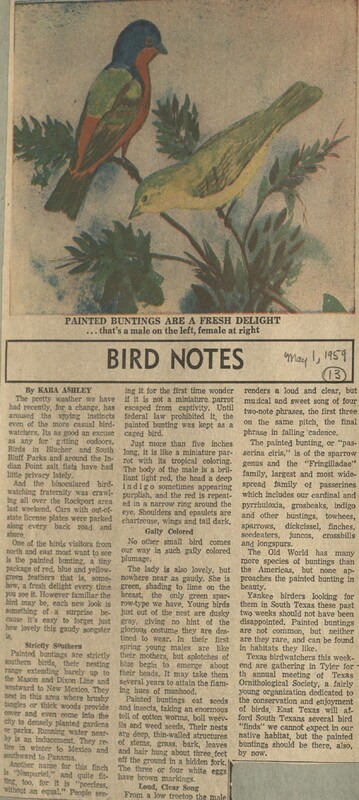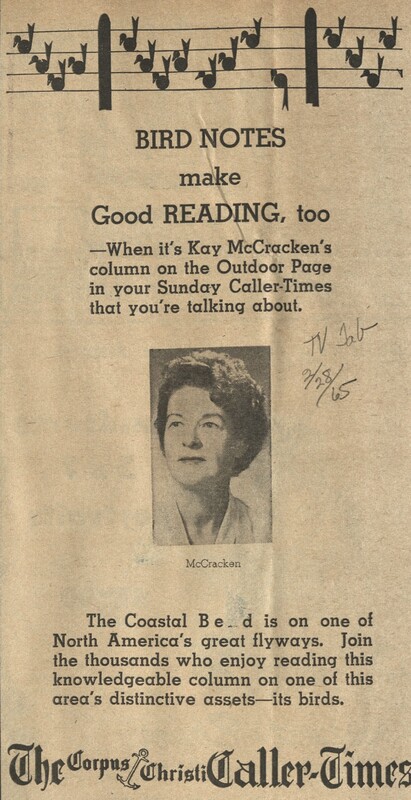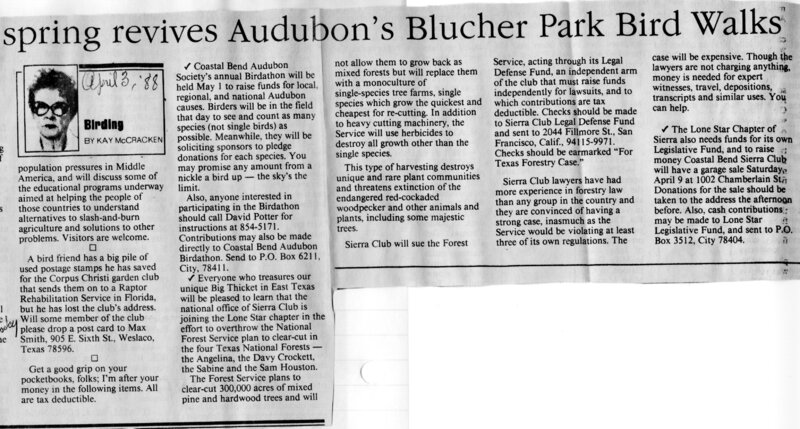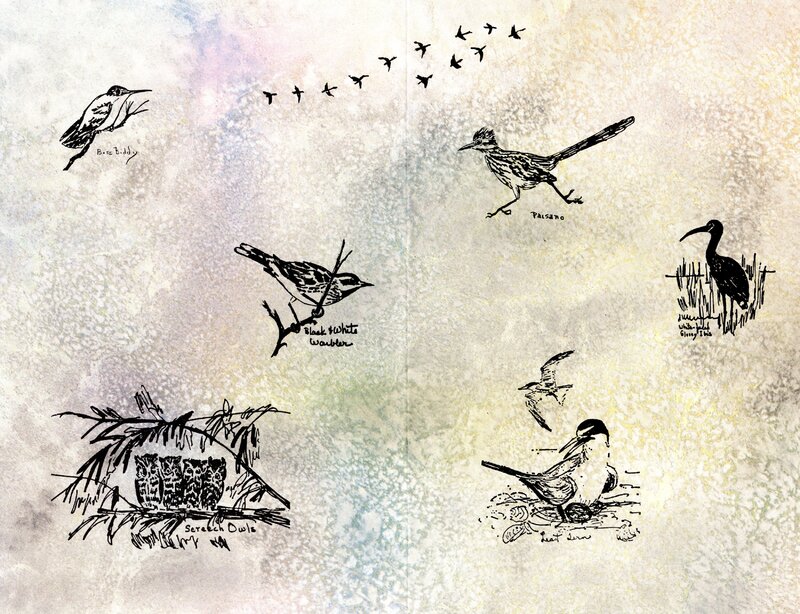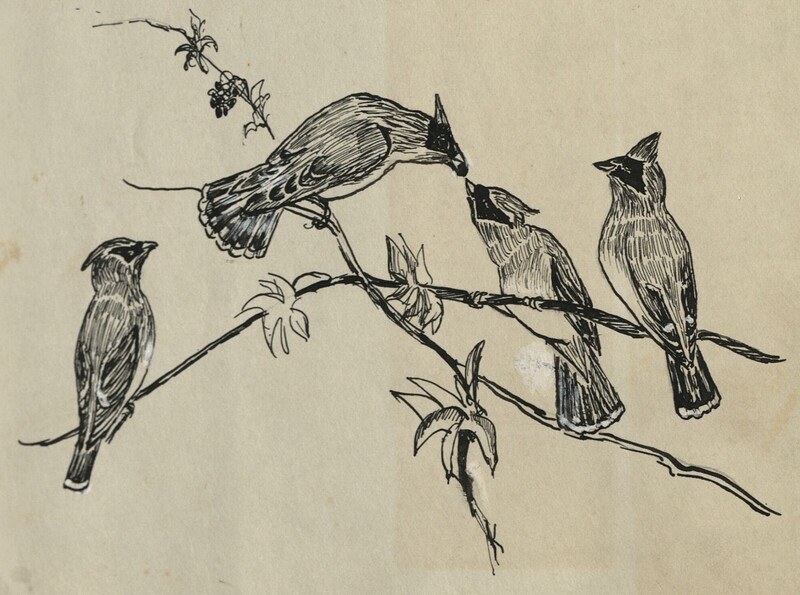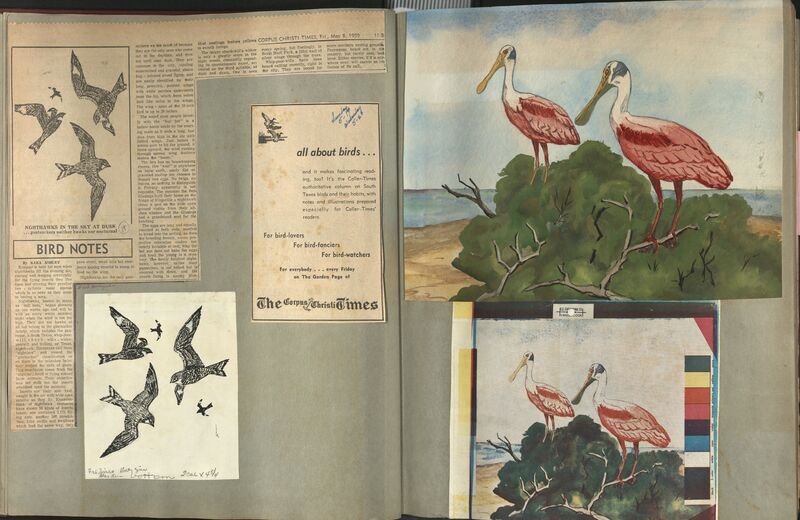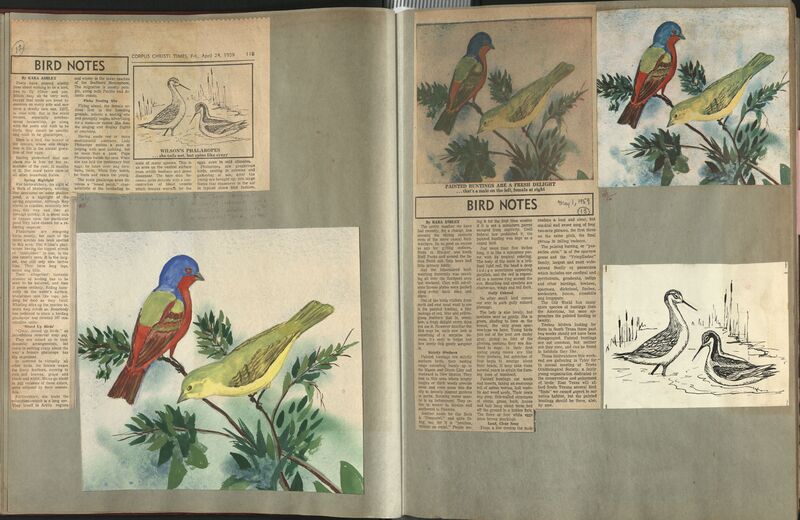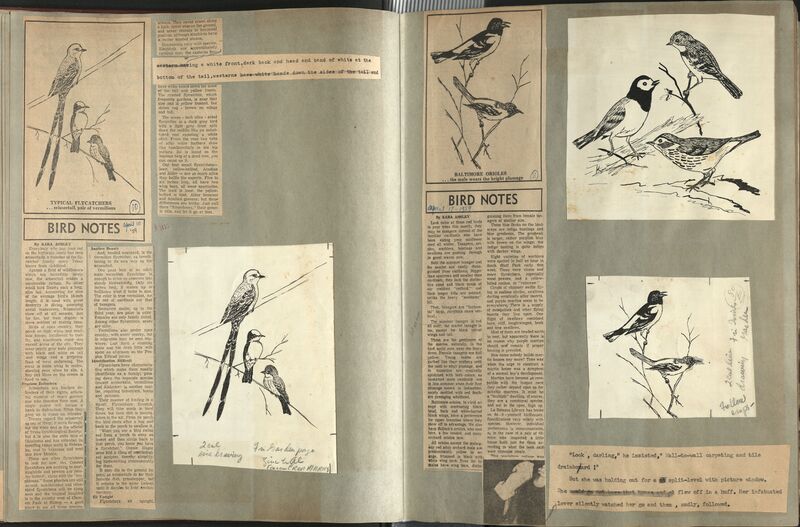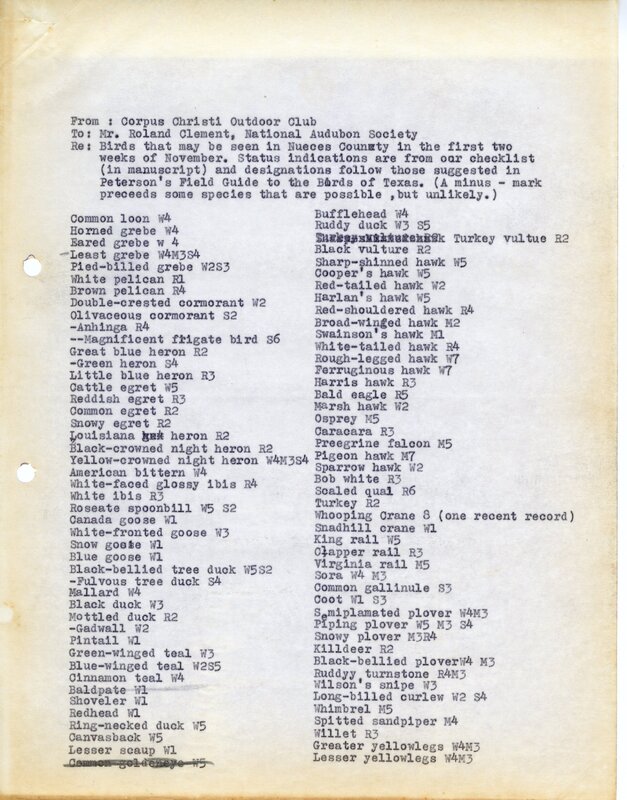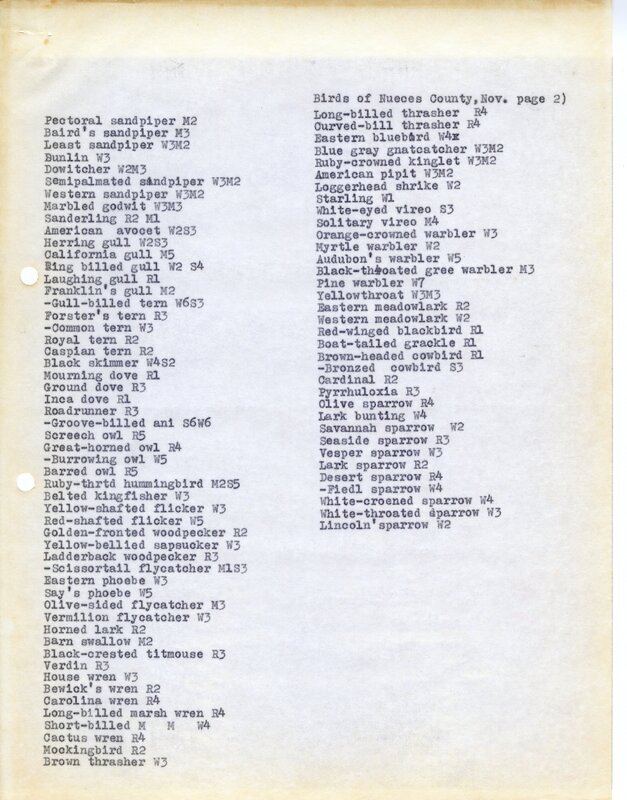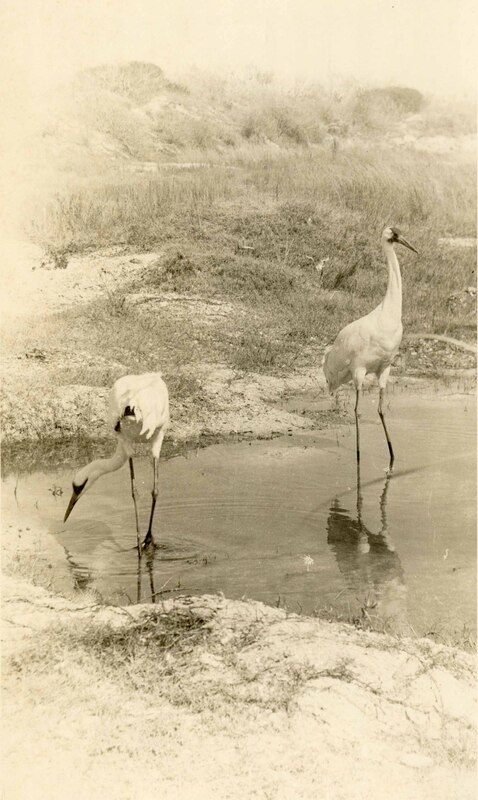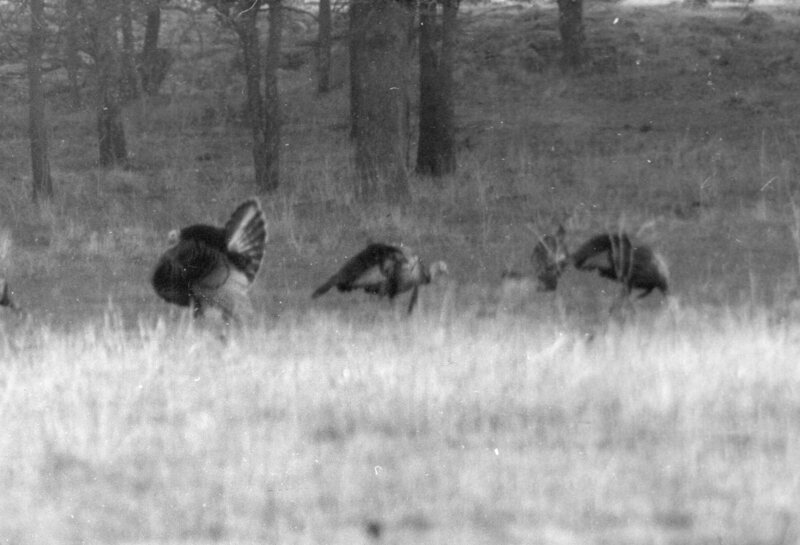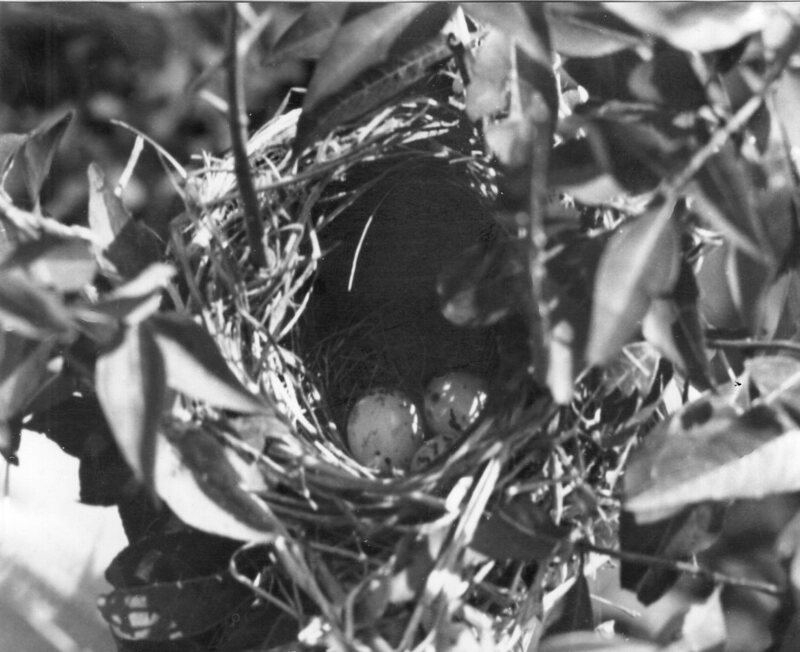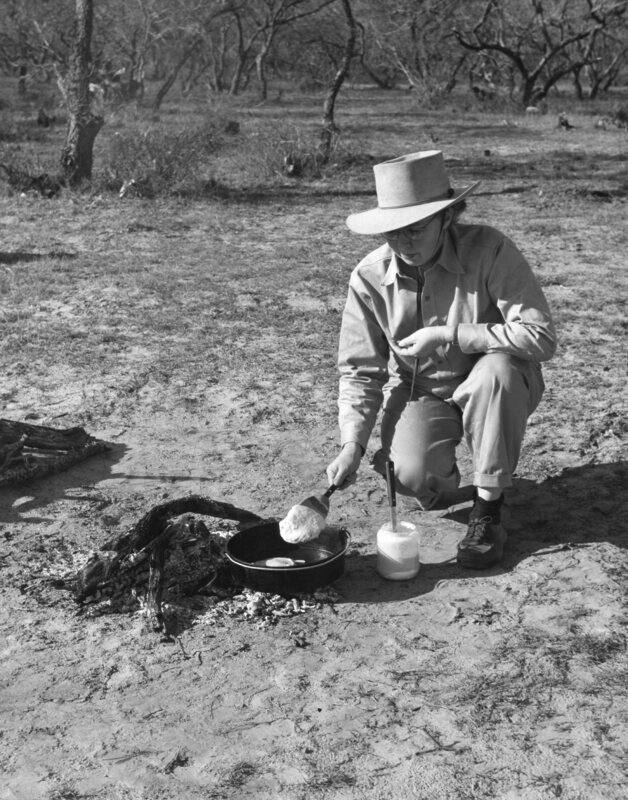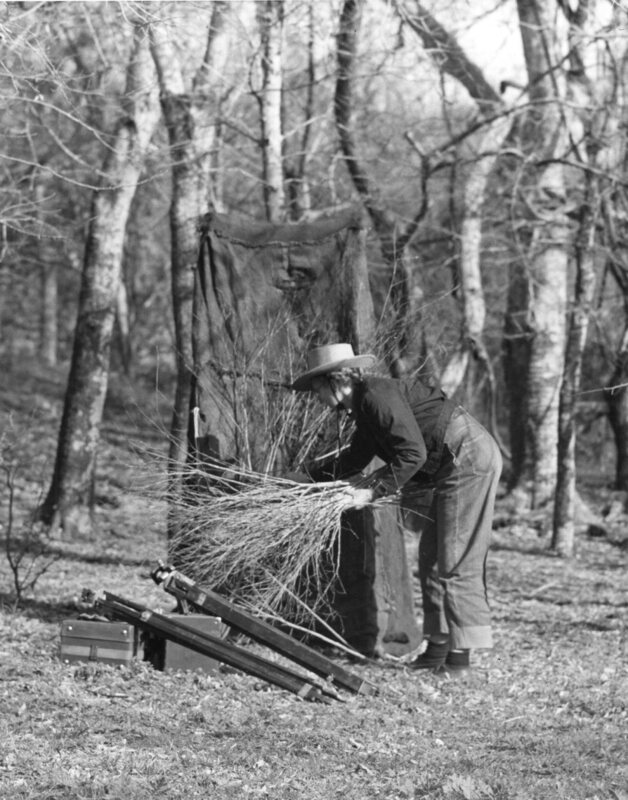Women in the Wings
Women have long played a vital role in many aspects of birding – but were not always valued as contributing members in the field. Connie Hagar, the “Bird Lady of Rockport”, didn’t argue with experts who questioned her observations, but rather she invited them to come see the birds for themselves. From the protection of endangered species to the conservation of natural habitats, women’s work in this field has a real and lasting impact on our ability to enjoy nature today. Although birding is classified as a hobby, it has led to many pivotal events in conservation and environmental movements – and it was a woman who placed Texas on the map as a prime location for birding and ecotourism! Truly anyone can enjoy this sport no matter their background; the women highlighted here were teachers and chemists, singers and journalists - none were "professional" ornithologists, but rather hobbyists whose expertise grew from the simple joy of watching birds for pleasure. A deep respect for nature fueled their work, which ranged from authoring newspaper columns to fighting for legislation to protect birds and their habitats.
Those of us who call the Coastal Bend our home are lucky to be in an area that makes this activity so easy – in fact, the TAMU-CC campus is well known for birding! So go outside and look for some of our birdy friends!
Conservation and Social Clubs
In the late 1800s conservation ecology emerged as a political and cultural movement alongside a boom in the formation of social clubs. Many ecologically-minded organizations were founded during this time, such as the Sierra Club (founded by John Muir in 1892), and the Audubon Society (founded in 1886 by George Bird Grinnell). Grinnell was influenced by an early education he received from Lucy Audubon along with her husband’s bird paintings. Although Grinnell dissolved his society, the concept and name were revived with the formation of the National Audubon Society in 1905. To this day the National Audubon Society focuses on the conservation and protection of birds and their habitats.
The bird conservation movement was sparked in part by women’s fashion. As social clubs grew, gender roles in many organizations shifted. Men began to focus on conserving the lands they had previously sought to conquer. Birds had become women’s fashion accessories and often adorned hats and clothing, but dwindling numbers of wild birds sparked interest in consumer action, and many women joined the conservation movement.
In 1957 the Audubon Outdoor Club of Corpus Christi was founded. This club gathered likeminded individuals for the purpose of conservation that was especially focused on birds and their habitats. In 1975 two more local organizations were founded: The Coastal Bend Sierra Club and the Coastal Bend Audubon Society, both of which would take up various environmentalist causes. Women play a vital role in each of these organizations.
Connie Hagar
Martha Conger “Connie” Neblett was was born in Corsicana, Texas in 1886 to Robert Scott and Mattie Neblett. Her parents believed that education was crucial and waited to have children until they had enough money to pay for their college education. Connie loved spending time outdoors, and her father taught his tomboy daughter the names of local birds. After graduation Connie attended Forest Park College, a “select” women’s school in Saint Louis. After graduating with a diploma in voice, Connie married Lynn Brooks in 1907. Throughout their marriage Lynn bestowed gifts on the wife he adored, such as a pair of love birds from Panama, aigrettes for her hair, and a small stuffed white bird meant to adorn a hat. At that time Connie did not know much about birds, but she was fascinated by their plumage. The marriage lasted for 14 years, but at age 35 the marriage was dissolved and Connie returned home to Corsicana to care for her ailing mother. As Mattie’s health improved, Connie and her sister Bert formed a Nature Club to honor their father through learning more about the local flora and fauna – with an emphasis on birds. Connie met Jack Hagar, who determinedly courted her over the course of five years. Jack often drove Connie around the countryside to look at birds. The couple finally married in 1926 with Mattie’s encouragement. Connie’s hobby of birdwatching grew, and she began volunteering to band birds for the U.S. Biological Survey, and her detailed notes of bird sightings were later recorded in her famous “Nature Calendars”. Connie and her sister Bert took their first trip to Rockport, Texas in 1933. When the Rockport Cottages went up for sale in 1935, the Hagars took the opportunity to move to the coastal town. Jack presided over the Cottages and Connie focused her attention on birding. Connie never claimed to be a professional, but she was one of the most influential birding enthusiasts in the Coastal Bend. Her work inspired many and the impact is still seen today.
Kay McCracken
Henrietta Karen “Kay” Harden was was born in Cisco, Texas in 1905 to Thaddeus and Dollie Harden. She graduated from Southern Methodist University with a bachelor’s degree in 1927. She married Dr. John Turner Bynum, Jr. in 1928. After his passing in 1941, Kay moved to Rockport, Texas and began working for the Rockport Pilot newspaper. Near the end of 1942 she began working for the Corpus Christi Caller-Times. She left the paper when she married the managing editor, Bob McCracken. He passed away only a year later in 1958. She taught journalism classes at Del Mar College and became a free-lance writer. She wrote a birding column for the Caller-Times that began in 1959 and ran for more than 30 years before she officially retired. McCracken also authored two books; the first was a biography of her dear friend and birder extraordinaire, Connie Hagar, and the second was a collection of McCracken’s “Bird Notes” columns. A brilliant intellect, she was a force to reckon with, and she helped further conservation issues in the area. In one such instance she partnered with Hans Suter to fight against the destruction of brown pelican nesting grounds. She was an active member of many groups in the area, such as The Audubon Outdoor Club of Corpus Christi, the Coastal Bend Sierra Club, the Coastal Bend Audubon Society, and the Nature Conservancy.
Phyllis Yochem
Phyllis Nigh was born in Illinois in 1927 to James and Madalyn Nigh. The family moved to Corpus Christi in 1934 where James worked as a public accountant. After graduating with a degree in Cultural Anthropology in 1947, Phyllis worked briefly for the Corpus Christi Caller-Times as a proofreader. Phyllis married John Yochem in 1950, and together the couple had three children. Yochem’s interest in birding took flight in the 1960s, but originated when she was a child and watched birds on the courthouse lawn with her sister as they waited for their father to finish his workday at Grishim’s Milk. The family were members of many conservation organizations. They camped in New Mexico and Colorado through the years, and Yochem developed friendships with many of the biggest figures in the local birding community. After Kay McCracken retired from writing birding columns in 1990, Yochem returned to the Caller-Times after a 42 year hiatus from the paper with a column titled “Bird Watch”. She wrote over 1,100 weekly birding columns over the span of 23 years.
Pat Suter
Patricia Evelyn Howe was born in Louisiana in 1926. Her father, Dr. Henry Howe, was a professor of geology and the director of the School of Geology at Louisiana State University. Pat’s father was concerned about the environmental impact of the oil industry in Louisiana well before it was on many conservationist’s radars, and his interest served as Pat’s introduction to the preservation of the natural world. Pat met Hans Suter while attending LSU for her graduate work in chemistry. They married, and in 1954 moved to Corpus Christi when Hans was hired as the research director for Celanese. Pat and Hans have two sons. Pat taught Chemistry at Del Mar College from 1962 to 1988 and received the Excellence in College Chemistry Teaching Award in 1986. While at Del Mar College she prepared telecourses in the field of chemical history and education which have since been distributed globally. Pat was always interested in environmentalism, but books like Silent Spring by Rachel Carson pushed the issue into worldwide prominence which forced industry to take action. This was especially concerning because the Suters had become bird watchers and many of these issues directly impacted birds and their habitats. She served as an advisor for many citizen groups created by industry leaders in Corpus Christi to work towards best practices for the pollution issues. Some of her most notable projects were the preservation of Oso Bay, the creation of Padre Island National Seashore, and protection for brown pelicans. She is a member of several conservation-centered organizations like the Audubon Outdoor Club and the Coastal Bend Audubon Society and is a past president of the Coastal Bend Sierra Club.
Birding Tools
Birding doesn’t require a huge outlay of expenses or equipment to get started – a good start can be made with a comprehensive bird guide and a basic set of binoculars. While other items such as scopes and tripods can be fun, all you really need is a good set of binoculars to begin, and birding pro Pat Suter was on hand with detailed advice for the novice birder and serious enthusiast alike.
Postcards
In the latter half of the 19th century postcards became popular for correspondence. As this popularity grew, the format of the cards shifted from blank paper on which to jot a quick note to a friend to the photograph-driven style that many are familiar with today. This style allowed images to be included and were important part of the communication as well. It was a way to show what you were doing or where you were. As many traveled to see nature, these pelican postcards were likely used to convey that message with the correspondence.
Ecotourism
Ecotourism makes up a large percentage of the tourism that brings business to the Coastal Bend. Wildlife, beaches, and mild climate have drawn people to the Gulf Coast since the area’s founding. The mighty tarpon was such a draw that even sitting presidents came to the area for the “Silver Kings”. Although birding is a different kind of attraction from fishing, birds have drawn thousands from all over the globe to witness the sheer number of species that can be seen. Birders flock to the coastal bend, while local birders may migrate to other locations such as Colorado or Canada. This is just another excuse to travel, and why not take it?
Birding Columns
Within our collections are many stories of conservation and enthusiasm for the natural world. Writers such as Kay McCracken and Phyllis Yochem used birding columns to educate readers, protect their subjects, and spread the joy that birds and birding brought to their lives. Journalist McCracken was a dedicated birder and could often be found at center of many local birding events and activities. Beginning on February 6 of 1959, Kay McCracken’s “Bird Notes” spanned a total of 31 years. First published without a byline, McCracken’s column was instantaneously popular, and when she retired in 1990 many faithful Corpus Christi Caller-Times readers were disappointed to see that the birding column wasn’t immediately continued by a successor. In stepped Phyllis Yochem, returning to the Caller-Times after a 42-year hiatus (she had previously worked as a proofreader). In the intervening years Yochem had become a serious birder herself, and her “Bird Watch” column would run for several decades as the “bird lady” became a leader in the local birding community. It’s hard to overstate the sheer work that went into the creation of these columns year after year, decade after decade, but neither McCracken nor Yochem regretted it. It was done, after all, for the love of birds.
Birdiest Illustrations
These illustrations were created by Kay McCracken and were often included in her early Bird Notes columns. Many birders illustrate their notes on birding, and they can range from paintings like these or quick sketches to give visual aids to their birding notes for future research or species identification.
Birdiest City
Did you know that Corpus Christi is known as “America’s Birdiest City”? The contest began in 2000 as a battle between San Diego, CA and New York, NY. By 2003, sixty cities had joined the competition, and Corpus Christi won the title that same year – and kept the title from 2012-2022. Because many migratory patterns and shifts cross Corpus Christi, this area has become a destination for birding and eco-tourism.
Corpus Christi’s Coastal Bend neighbors have strong eco-tourism draws of their own. Whooping cranes make Aransas Wildlife Refuge and Goose Island State Park ideal spots for birders. Port Aransas hosts an annual Whooping Crane Festival that occurs as the majestic birds return to the area for the winter. Rockport has 10 birding sites on the Great Texas Birding Trail, and hummingbird enthusiasts can enjoy an annual festival thrown in honor of the tiny fluttering bird.
The important role women have played in birding extends to the birds themselves. Josephine, a whooping crane nicknamed “Jo”, was found by a hunter in Louisiana in 1940. Jo had suffered an injury and was taken to the Audubon Park Zoo in New Orleans. At the zoo Jo was coupled with another injured whooping crane named Pete in the hopes that they would mate. At that time, whooping crane numbers had dwindled severely, and the species was at risk of extinction. The pair was transferred to the Aransas Wildlife Refuge in 1948 where the last of the whooping cranes nested. Because of their injuries, Crip and Jo could not fly and were hand fed by the refuge manager’s wife. Sadly, Pete passed away and Jo needed a new mate. According to researchers there were only 31 known whooping cranes left in 1949, making finding a new mate for Jo a matter of utmost importance.
Thankfully a second male whooping crane named Crip was at the refuge. Crip and Jo showed great interest in each other and even produced several eggs. They had the first successful hatching of a captive whooping crane, but the fledgling disappeared four days later, presumedly the victim of predators. Even with this setback, the successful mating of the pair brought hope to the future of the species. Travel was once again in Jo’s future, however, as she belonged to the Audubon Park Zoo and it was thought that the protected environment of the zoo would give hatchlings a better chance of survival. This meant that Jo’s mate would need to be loaned to the zoo. In 1956 Crip and Jo welcomed another hatchling, and the pair went on to raise four chicks – a very happy ending!
Birding Locations in the Coastal Bend
Corpus Christi
Blucher Park- 209 S Tancahua St. Corpus Christi, TX 78401
Hazel Bazemore County Park- 4343 Co Road 69 Corpus Christi, TX 78410
Hans and Pat Suter Wildlife Refuge- 6001 Ennis Joslin Rd. Corpus Christi, TX 78412
Hilltop Community Center- 11425 Leopard St, Corpus Christi, TX 78410
Oso Bay Wetlands Preserve- 2446 N. Oso Parkway, Corpus Christi, TX 78414
Packery Channel Oak Motte Sanctuary- 14220 S. Padre Island Dr. Corpus Christi, TX 78404
Pollywog Pond- Sharpsburg Rd and I-37, Corpus Christi, TX 78410
South Texas Botanical Gardens- 8545 S. Staples St. Corpus Christi, TX 78413
Tule Lake- 7201 Up River Rd, Corpus Christi, TX 78409
Surrounding Areas:
Aransas Pass Nature Park- East Johnson Ave, Aransas Pass,TX, 78336
Aransas National Wildlife Refuge- 1 Wildlife Cir, Austwell, TX 77950
John J. Sablatura Park- TX-44, Banquete, TX 78339
Choke Canyon State Park- 358 Recreational Rd 8, Calliham, TX 78007
King Ranch- 2205 W Highway 141 Kingsville, TX 78364
Lake Corpus Christi State Park- 23194 Park Rd. 25, Mathis, TX 78368
Matagorda Bay Nature Park- 6420 FM 2031, Matagorda, TX, 77457
Joan and Scott Holt Paradise Pond- 342 Cut Off Rd, Port Aransas, TX, 78373
Leonabelle Turnbull Birding Center- 1356 Ross Ave, Port Aransas, TX 78373
Indian Point Pier- 100 Hwy 181, Portland, TX 78374
Sunset Lake- 201 Sunset Dr. Portland, TX 78374
Connie Hagar Cottage Sanctuary- 1500 S Church St, Rockport, TX 78382
Goose Island State Park- 202 S Palmetto St, Rockport, TX 78382
Henderson Nature Preserve- 1010 Palmetto Avenue, Rockport,TX,78382
Linda S. Castro Nature Sanctuary- 4041 TX-35, Rockport, TX 78382
Welder Wildlife Refuge- 10429 Welder Wildlife, Sinton, TX 78387
Fred Jones Nature Sanctuary- Co Rd 69E, Taft, TX 78390
Protected Areas
Our local birding organizatons do much more than provide fun opportunities to bird – they work hard at preserving habitats that are vital for the many resident and migratory birds that can be found in the Coastal Bend area.
Here are some (but certainly not all) of the protected areas you can find in and around Corpus Christi:
Blucher Park
Hazel Bazemore County Park
Held-Moran Nature Sanctuary
Packery Channel Oak Motte Sanctuary
Polliwog Pond Birding & Wildlife Sanctuary
If you’d like to get involved with birding in the Coastal Bend, please reach out to the Audubon Outdoor Club of Corpus Christi (www.audubonoutdoorclub.com) or the Coastal Bend Audubon Society! (www.coastalbendaudubon.org)

